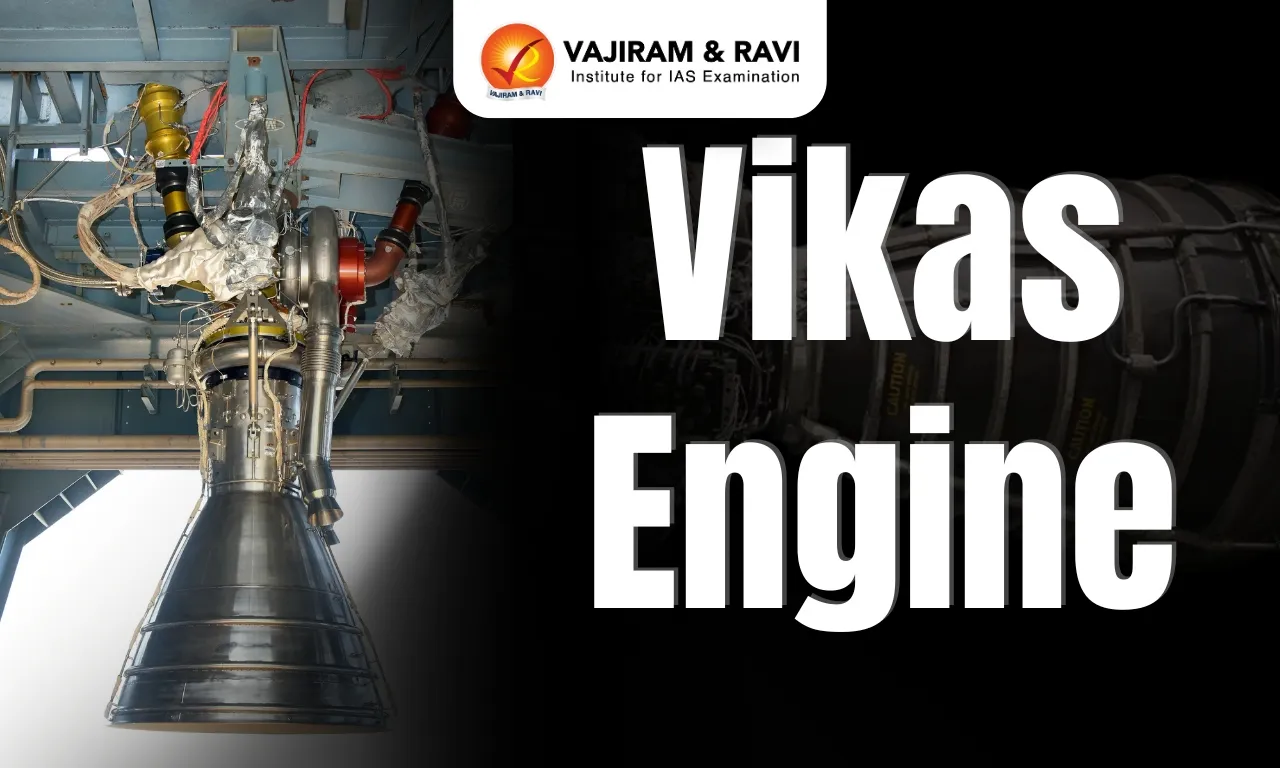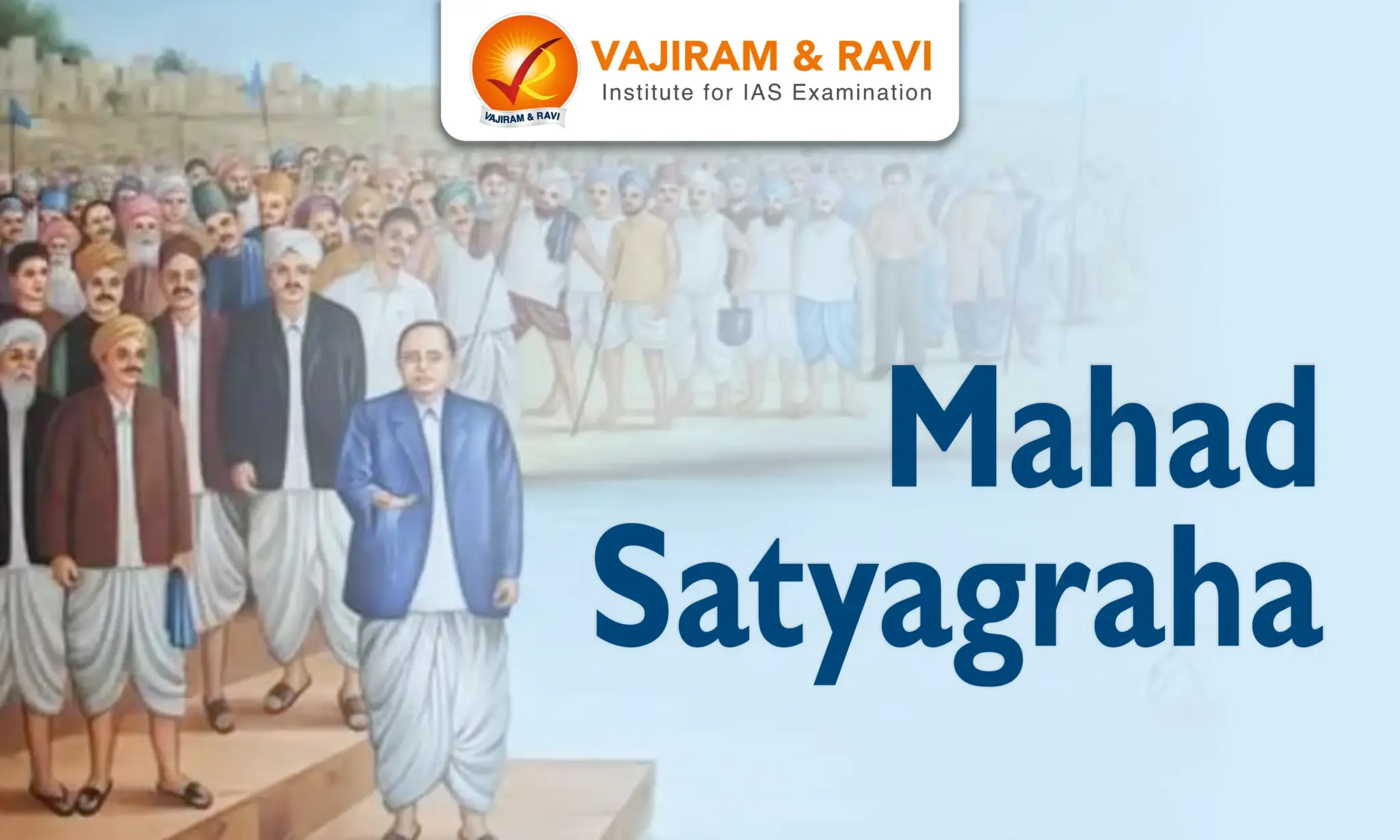The VIKAS Engine, named in honour of Vikram Ambalal Sarabhai, is a family of liquid-fueled rocket engines that was conceived and developed by the Liquid Propulsion Systems Centre of ISRO during the 1970s. Initially, these engines incorporated imported French components, which were later replaced with domestically manufactured counterparts. The design of the Vikas Engine drew inspiration from the European Viking Engines.
These engines have applications in the Core Stage (Liquid Propulsion) of ISRO's Polar Satellite Launch Vehicle (PSLV) and the Geosynchronous Satellite Launch Vehicle (GSLV). The fuel capacity of the Vikas engine is 40 tonnes for the PSLV, GSLV Mark I and II, and 55 tonnes for the GSLV Mark III.
History of Vikas Engine
The history of the development of Vikas engine goes back to the 1970s when the Liquid Propulsion Systems Centre of ISRO developed Vikas Engine.
- The technology for the Vikas engine was transferred from Societe Europeenne de Propulsion in 1974.
- It is a French Aerospace engine manufacturer, a subsidiary of Safran, with which HAL has recently signed a MoU in 2023.
- The first engine was built using acquired technology. It was tested successfully in 1985.
Working of Vikas Engine
The Vikas engine plays a crucial role in powering the second stage of the PSLV, as well as the boosters and second stage of the GSLV Mark I and II. It also serves as the core stage engine for LVM3.
- Propellant loading specifications differ, with PSLV and GSLV Mark I and II utilizing 40 tonnes, while LVM3 requires 55 tonnes.
- The Vikas engine operates on a combination of 40 metric tonnes of Unsymmetrical Dimethylhydrazine (UDMH) as the fuel and Nitrogen Tetroxide (N2O4) as the oxidizer. It achieves a maximum thrust of 725 kN.
Fuels
- UDMH: Itis a hypergolic (ignites spontaneously when mixed with another component of the fuel) rocket fuel.
- The second component is usually dinitrogen tetroxide (N2O4) which acts as an oxidiser.
- UDMH is generally preferred to hydrazine (N2H4) in rocket fuels because it auto-ignites at a higher temperature and is thus more stable in storage.
- UH 25: It is a mixture of 75% UDMH and 25% hydrazine (N2H4).
Types of Vikas Engine
There are different types of Vikas Engines. Some of them are already developed and some are under-development stage. There are two main types of Vikas engines:
- HTVE (High Thrust VIKAS Engine): The HTVE are modified VIKAS-2B engines.
- This engine has a chamber pressure of 62 bar, which is 6% higher than the older version of the engine.
- This gives it a thrust of 800 kN. The HTVE engine is used for the second stage of the GSLV.
- HPVE (High Pressure or High-Speed VIKAS Engine): This engine is still under development.
- It is a significantly modified version of the Vikas engine with a higher chamber pressure and thrust.
- The HPVE engine is being developed for the GSLV booster and the first stage of the future LVM3 (M).
Variants of Vikas Engine
The following are the different variants of the Vikas Engine:
| Type | Fuel | Launcher Stages |
| Booster/first stage | ||
| Vikas-2 | UDMH / N2O4 | GSLV Mk-I L40H Strapon |
| Vikas-2B | UH 25 / N2O4 | GSLV Mk-II L40H Strapon |
| Vikas-X | UH 25 / N2O4 | LVM3 L110 stage |
| Second stage | ||
| Vikas-4 | UDMH / N2O4 | GSLV Mk-I GS2 stage, PSLV PS2 stage |
| Vikas-4B | UH 25 / N2O4 | GSLV Mk-II GS2 stage, PSLV PS2 stage |
Throttling Test of Vikas Engine
The first throttling test for the Vikas Engine took place in January 2023, successfully achieving a targeted 67 percent thrust level for a duration of 43 seconds.
- Throttling means controlling the jet’s thrust level by managing the flow rate of the fuel.
- Setting the power at 67 per cent enables the satellite to finely tune its speed and trajectory, facilitating precise corrections to its orbital path.
- The significance of the 67% specific thrust level depends on the engine design and prevailing conditions, usually indicating a reduced thrust compared to the engine's maximum capability.
- The throttling period for a liquid propellant satellite engine refers to the amount of time for which the engine is running at a reduced thrust.
- Throttling is instrumental in adjusting the spacecraft's speed and orientation by modifying the engine's thrust level.
- The duration of throttling varies based on mission requirements and motor design.
- For example, a 67 percent thrust level may be sustained for 43 seconds.
VIKAS Engine for Gaganyaan Programme
The VIKAS engine is going to take forward India's pioneering Gaganyaan Mission, marking the country's first manned space initiative.
- A high-thrust variant of the Vikas Engine specifically designed for the Gaganyaan mission underwent a successful test-firing lasting 25 seconds at ISRO's Propulsion Complex (IPRC) in Mahendragiri.
- The purpose of the test was to assess the engine's resilience under conditions exceeding its normal operating parameters.
- The engine not only met the test objectives but also exhibited close alignment between predicted and actual parameters throughout the entire duration of the test.
- The Test Vehicle Abort Mission (TV-D1) is a crucial aspect of the Gaganyaan program, designed to execute a high-altitude abort in the event of anomalies during launch or post-launch.
- The TV-D1 vehicle is equipped with a modified VIKAS engine, featuring the Crew Module and Crew Escape System attached to its fore-end.
Last updated on November, 2025
→ Check out the latest UPSC Syllabus 2026 here.
→ Join Vajiram & Ravi’s Interview Guidance Programme for expert help to crack your final UPSC stage.
→ UPSC Mains Result 2025 is now out.
→ UPSC Notification 2026 is scheduled to be released on January 14, 2026.
→ UPSC Calendar 2026 is released on 15th May, 2025.
→ The UPSC Vacancy 2025 were released 1129, out of which 979 were for UPSC CSE and remaining 150 are for UPSC IFoS.
→ UPSC Prelims 2026 will be conducted on 24th May, 2026 & UPSC Mains 2026 will be conducted on 21st August 2026.
→ The UPSC Selection Process is of 3 stages-Prelims, Mains and Interview.
→ UPSC Result 2024 is released with latest UPSC Marksheet 2024. Check Now!
→ UPSC Prelims Result 2025 is out now for the CSE held on 25 May 2025.
→ UPSC Toppers List 2024 is released now. Shakti Dubey is UPSC AIR 1 2024 Topper.
→ UPSC Prelims Question Paper 2025 and Unofficial Prelims Answer Key 2025 are available now.
→ UPSC Mains Question Paper 2025 is out for Essay, GS 1, 2, 3 & GS 4.
→ UPSC Mains Indian Language Question Paper 2025 is now out.
→ UPSC Mains Optional Question Paper 2025 is now out.
→ Also check Best IAS Coaching in Delhi
Tags: quest vikas engine



















